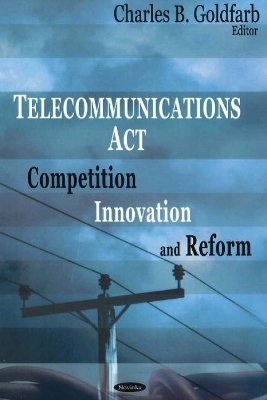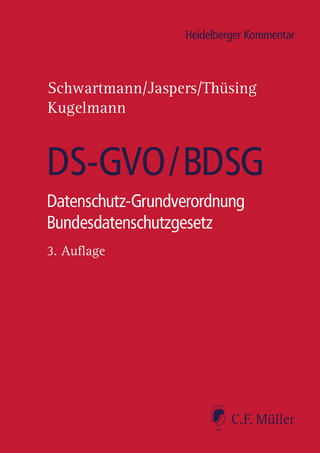
Telecommunications Act
Competition, Innovation & Reform
Seiten
2006
Nova Science Publishers Inc (Verlag)
978-1-60021-133-1 (ISBN)
Nova Science Publishers Inc (Verlag)
978-1-60021-133-1 (ISBN)
In 1996, Congress enacted comprehensive reform of the nation's statutory and regulatory framework for telecommunications by passing the Telecommunications Act, which substantially amended the 1934 Communications Act. Exploring several issues, this book includes the act in its entirety.
In 1996, Congress enacted comprehensive reform of the nation's statutory and regulatory framework for telecommunications by passing the Telecommunications Act, which substantially amended the 1934 Communications Act. The general objective of the 1996 Act was to open up markets to competition by removing unnecessary regulatory barriers to entry. At that time, the industry was characterised by service-specific networks that did not compete with one another: circuit-switched networks provided telephone service and coaxial cable networks provided cable service. The act created distinct regulatory regimes for these service-specific telephone networks and cable networks that included provisions intended to foster competition from new entrants that used network architectures and technologies similar to those of the incumbents. This 'intramodal' competition has proved very limited. But the deployment of digital technologies in these previously distinct networks has led to market convergence and 'intermodal' competition, as telephone, cable, and even wireless networks increasingly are able to offer voice, data, and video services over a single broadband platform. There is consensus that the current statutory framework is not effective in the current market environment, but not on how to modify it. The debate focuses on how to foster investment, innovation, and competition in both the physical broadband network and in the applications that ride over that network while also meeting the many non-economic objectives of U.S. telecommunications policy: universal service, homeland security, public safety, diversity of voices, localism, consumer protection, etc. This book explores these issues and includes the act in its entirety.
In 1996, Congress enacted comprehensive reform of the nation's statutory and regulatory framework for telecommunications by passing the Telecommunications Act, which substantially amended the 1934 Communications Act. The general objective of the 1996 Act was to open up markets to competition by removing unnecessary regulatory barriers to entry. At that time, the industry was characterised by service-specific networks that did not compete with one another: circuit-switched networks provided telephone service and coaxial cable networks provided cable service. The act created distinct regulatory regimes for these service-specific telephone networks and cable networks that included provisions intended to foster competition from new entrants that used network architectures and technologies similar to those of the incumbents. This 'intramodal' competition has proved very limited. But the deployment of digital technologies in these previously distinct networks has led to market convergence and 'intermodal' competition, as telephone, cable, and even wireless networks increasingly are able to offer voice, data, and video services over a single broadband platform. There is consensus that the current statutory framework is not effective in the current market environment, but not on how to modify it. The debate focuses on how to foster investment, innovation, and competition in both the physical broadband network and in the applications that ride over that network while also meeting the many non-economic objectives of U.S. telecommunications policy: universal service, homeland security, public safety, diversity of voices, localism, consumer protection, etc. This book explores these issues and includes the act in its entirety.
Preface; Telecommunications Act: Competition, Innovation, and Reform; The Telecommunications Act of 1996; Index.
| Erscheint lt. Verlag | 13.8.2006 |
|---|---|
| Verlagsort | New York |
| Sprache | englisch |
| Maße | 260 x 180 mm |
| Gewicht | 553 g |
| Themenwelt | Recht / Steuern ► EU / Internationales Recht |
| Recht / Steuern ► Privatrecht / Bürgerliches Recht ► IT-Recht | |
| ISBN-10 | 1-60021-133-X / 160021133X |
| ISBN-13 | 978-1-60021-133-1 / 9781600211331 |
| Zustand | Neuware |
| Haben Sie eine Frage zum Produkt? |
Mehr entdecken
aus dem Bereich
aus dem Bereich
Telekommunikations- und Multimediarecht
Buch | Softcover (2024)
dtv Verlagsgesellschaft
CHF 38,95
Datenschutz-Grundverordnung Bundesdatenschutzgesetz
Buch | Hardcover (2024)
C.F. Müller (Verlag)
CHF 279,95


